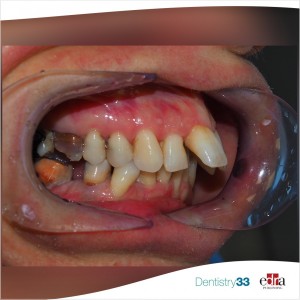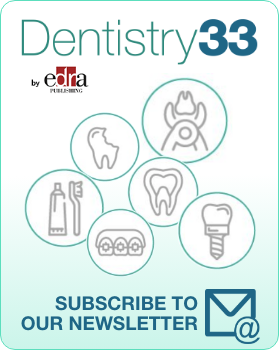
Orthodontic treatment and periodontally compromised patients: effects of the treatment
Davide Elsido
An increasing number of adult patients are now seeking orthodontic treatment due to an increased focus of society on esthetics and health consciousness. With the incidence of periodontal problems shown to increase with age, ortho-perio interactions play an important role in management of these patients. Orthodontic problems in the majority of these adult patients are a consequence of their underlying periodontal issues leading to reduced periodontal support and resulting in pathological migration, proclination of maxillary anterior teeth, interdental spacing, rotation and overeruption, resulting in compromised function and esthetics. Unfortunately there is no evidence-based solution to these problems and, with an increasing number of adults with malocclusion and compromised periodontium seeking orthodontic treatment, it is important to clarify the various issues involved in managing periodontally compromised dentitions.
As orthodontic tooth movement is basically a bone remodeling phenomenon, the effect of orthodontic treatment on osseous topography in patients whose bone levels are already compromised is crucial.
This was a prospective, randomized, controlled clinical trial. Thirty-six periodontally compromised adult patients (mean age: 29.67 ± 4.8 years) were randomly allocated to either test (perio-ortho) or control group (perio). After periodontal stabilization in both groups, orthodontic treatment was started in the test group, whereas the control group remained on periodontal maintenance only. Evaluation and comparison of clinical parameters (plaque index [PI]; gingival index [GI]; bleeding on probing [BOP]; probing depth [PD]; clinical attachment level [CAL]) of both groups was assessed at three time intervals: T0 (base line), T1 (at start of orthodontic treatment), and T2 (1 year after start of orthodontic treatment). Radiological parameters (alveolar bone levels [ABL]) were recorded using CBCT at T1 and T2.
The results of the study showed favorable results of a combined periodontic-orthodontic treatment in periodontally compromised patients. There was a statistically significant improvement in all the periodontal parameters in the control and test groups with a highly significant CAL gain of 0.74 mm (CI: 0.64-0.83) and 0.98 mm (CI: 0.94-1.01), respectively, from T0-T2. Use of CBCT enabled evaluation of ABL changes on all four surfaces of upper and lower anterior teeth and showed statistically significant improvement in ABL from T1 to T2 in both groups.
Within the limitations of the study, it can be concluded that orthodontic treatment does not have a deleterious effect on periodontal health after periodontal stabilization in periodontally compromised patients.
 Related articles
Related articles
Orthodontics 05 September 2022
Effect of orthodontic treatment on periodontal health of periodontally compromised patients
An increasing number of adult patients are now seeking orthodontic treatment due to an increased focus of society on esthetics and health consciousness. With the incidence of periodontal problems...
 Read more
Read more
Restorative dentistry 17 May 2024
Advancements in manufacturing technologies have revolutionized the fabrication of dental restorations and prostheses, allowing for enhanced material manipulation and improved geometric precision. In...
The Texas A&M School of Dentistry dental hygiene program, and its students past and present, were celebrated at a luncheon April 26 at the Arts District Mansion in downtown Dallas.
Endodontic Practice Partners (EPP), a Nashville-based specialty partnership organization exclusively focused on supporting endodontics, is proud to announce the appointment of Dr. Phil Wenk to its...
Products 17 May 2024
Alpine Dental of Rockwall celebrates National Children's Dental Health Month this February by providing parents with vital information into best taking care of their children's oral health.


.jpg)








